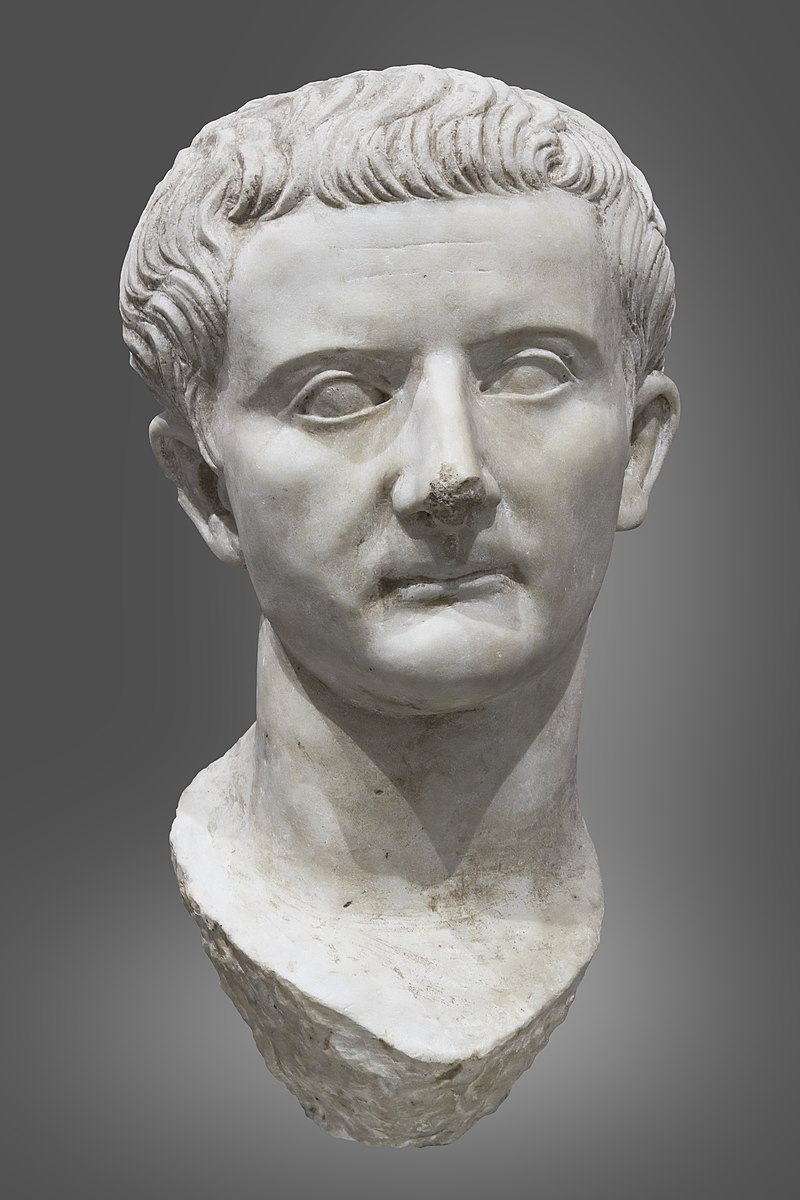Augustus was a hard act to follow. Rome’s first Emperor is widely considered to be one of the finest absolute rulers of all time. Quite literally, no one could measure up the example he set. Seen in this light, Tiberius never stood a chance.
One by one the legitimate heirs of Augustus died, leaving him no option but to adopt an heir. The father of Tiberius bore the name Tiberius Claudius Nero (TCN). For those not conversant with the details, this is a bit confusing as three emperors bore the names Tiberius, Claudius and Nero. The first two were descendants [son and grandson] of TCN by his scheming wife Livia, who divorced TCN in order to marry Augustus. TCN picked the wrong side in the Roman Civil War, casting his lot with Mark Antony, who was defeated by Augustus. Thus, he did not have much choice when Augustus fell in love with Livia, and insisted TCN divorce her.
Ensconced at the first Empress of the Roman Empire, Livia experienced 87 long and eventful years, surviving Augustus by 15 years. Tiberius claimed to be too busy to visit his mother during her final illness, delegating Caligula (the future emperor and great-nephew of Tiberius) to preside over her funeral.
I mention all this because you won’t find these crucial family details in this book by Edward Champlin (professor of classics at Princeton University). As the author himself has been unable to bring his manuscript to completion due to poor health, the text has been edited by Robert A. Kaster (professor Latin at Princeton).
Anyone approaching Tiberius for the first time would be well advised to read a broader biography first, such as those by Robin Seager (2005) or Barbara Levick (1999). Champlin himself quotes from an earlier but notable biography of Tiberius, written in 1929 by G.P. Baker: “he has always been and he remains, the greatest psychological problem in history.” Champlin’s book approaches Tiberius as just such a psychological problem, and while it is the product of much study, it’s appeal will be somewhat limited by its focus, and lack of any illustrations. An ancient cameo of Tiberius that graces the cover is the only glimpse we get of the second emperor and his world.
The defining moment of Tiberius’ reign was the fall of his close confidant Sejanus. Again, the full background to this is absent from the text at hand, so its import cannot really be appreciated without a complete understanding of the machinations of Roman Imperial government. We do, however, get the psychological analysis that is often missing from more general accounts. We are told that the plot against Sejanus took place in the year 31. “As the plot unfolds in Rome, Tiberius nervously awaits events on the towering crag on Capri. He spends his time watching from the cliff for signals that he has ordered to inform him immediately each step of the way.”
Champlin tells us that Tiberius “was in no way more secure or confident” after Sejanus died. “For the next nine months, he did not leave his deep seclusion in the villa that is called Jupiter’s. How appropriate that the master of the world should be so removed, so far from the blood in the streets of Rome, high above human affairs, brooding in a villa named after the greatest of Roman gods.” Certainly, a plot worthy of a Wagner opera, a parallel the author does not draw. Champlin spends much ink on whether the villa on Capri was really named for Jupiter, or some other figure. An interesting point, but one that many readers will find so ‘deep in the weeds’ that it interrupts the narrative of an incredibly exciting event.
In a book of great drama, it comes as a welcome respite to read about The Contest of the Tidbits. Tiberius was “an epicure in an age of gastronomy.” He awarded a vast sum to the wit of the age, Asellius Sabinus, for writing about four great delicacies at a banquet (a mushroom, a fig-pecker, an oyster and a thrush). Several pages are devoted to culinary matters. It is said the First Gourmet was Archestratus of Gela, who wrote a masterpiece whose title has been translated as La Dolce Vita. For those enamoured of that lifestyle, captured in several iconic Italian films of the 1950s and 60s, it is fascinating to trace its origins here.
For me, the greatest revelation in the book is in Chapter 3, The Odyssey of Tiberius Caesar. “What did it mean to live in a world alive with myth?” Champlin poses this rhetorical question at the outset, but the full answer is quite astonishing. Before retreating to Capri, Tiberius lived in Sperlonga, 120 km south of Rome. “The palace at Sperlonga was the very heart of an early imperial reimagining of the tale of Odysseus on a grand scale.” Our author was been able to reconstruct the appearance of all five groups of sculpture that adorned a vast cave at the palace which was situated just 30km from the island home of Circe, who enchanted Odysseus. “The natural landscape itself is a map of allusions,” writes Champlin, whose description of the interior and exterior of this vast palace complex is quite extraordinary. “From his final home on Circe’s mountain, close by across the water, the hero Odysseus watched the master of the villa at Spelunca [Latin for cave], even as Tiberius, the master of the villa, watched his hero Odysseus in the cave: a place reverberating with memory indeed.”
Certainly, as a book to get into the mind of Tiberius, this one is par excellence.
The book concludes with the usual scholarly apparatus: Notes (pages 197-240); Bibliography (241-253), and Index (255-269).
Tiberius & His Age: Myth, Sex, Luxury , and Power. Published by Princeton Univ. Press for $38.
image: marble bust of Tiberius, made between 14 and 23 CE. In the collection of the Musee Saint-Raymond. courtesy of Wikimedia Commons
